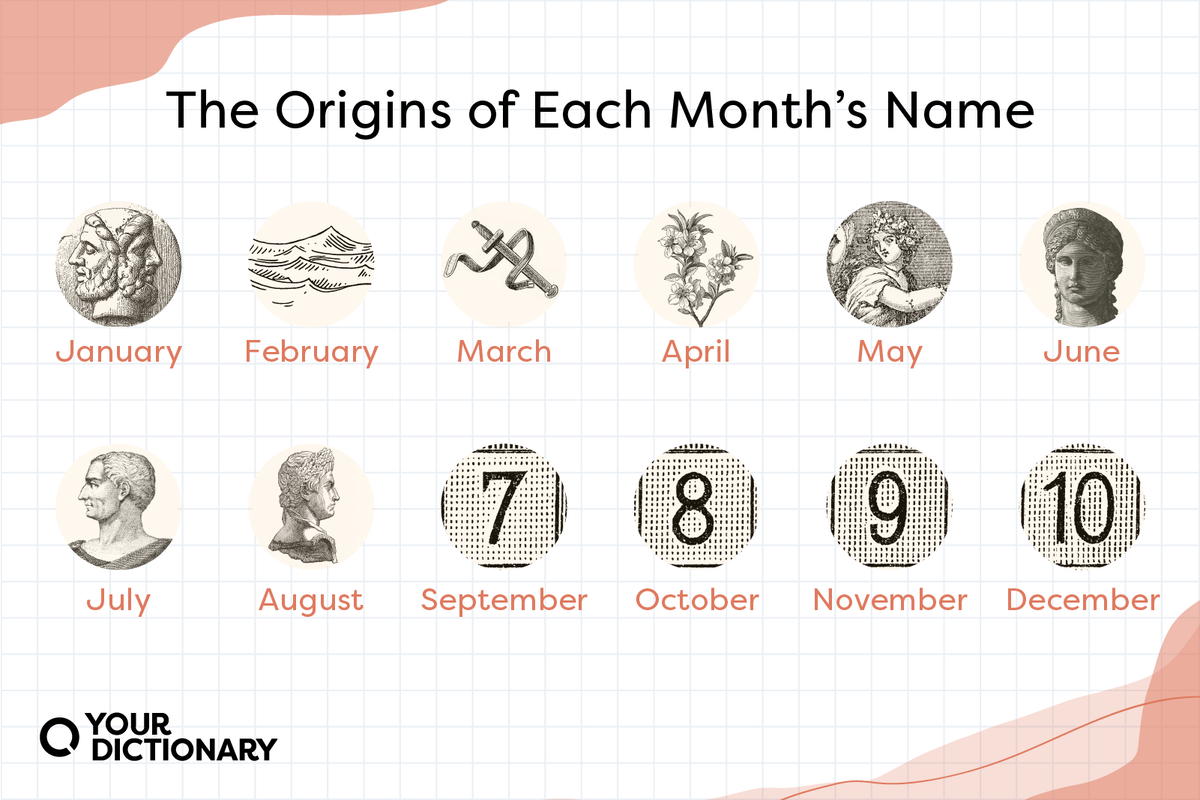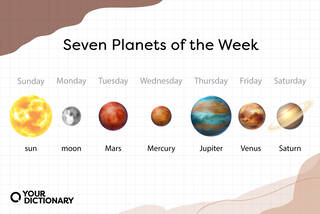
Why did the months of July and August used to be called Quintilis and Sextilis? And why does the month of February have that random letter “r” in the middle of it?
These monthly mysteries may sound unsolvable, but they all have an answer — and you have Julius Caesar to thank. (Et tu, brute?)
The History Behind the Months of the Year
While we’re all used to our 12 months of the year, the calendar hasn’t always looked that way.
Early Greek and Babylonian calendars used the lunar cycle to chart their months, and the Roman Empire adapted these systems into their first Roman calendar — which would face a few more revisions over the next millenia.
|
Calendar |
Introduced |
Features |
|
Roman calendar |
738 B.C. (King Romulus) |
|
|
Julian calendar |
46 B.C. (Julius Caesar) |
|
|
Gregorian calendar |
1882 A.D. (Pope Gregory XIII) |
|
Most of the world uses the Gregorian calendar today. But what does the history of our calendar have to do with the names of the month?
Quite a bit — every month was named (and renamed, in some cases) after Roman mythology, Roman emperors, and the Latin language.

How the Days of the Week Got Their Names
January: The Roman God Janus
Originally Ianuarius in the Roman calendar, January is named after the two-faced Roman god Janus.
That’s not to say he was untrustworthy; Janus literally had two faces in Roman mythology, each symbolizing part of a transitional period. Since January transitions us from last year to a new year, it’s an apt symbol.
February: The Festival of Februalia
February (Februarius in the Roman calendar) refers to the Roman purification festival of Februalia, which comes from the Latin februa — “to cleanse.” That’s where that mysterious “r” comes from; in Latin, februa is pronounced feb-roo-ah.
Februalia lasted for 12 days in the second month of the year and involved atonement and sacrifices to the Roman gods.
March: The Roman God Mars
In the Roman calendar, March (or Martius) was the first official month of the year. It was named after the Roman god of war, Mars, because military operations began after the thaw of winter.
Fast Fact
Our modern “Tuesday” is also named after the god of war — in Latin, Tuesday is dies Martis, which becomes martes in Spanish, martedì in Italian, and mardi in French.
April: The Latin Word “Aperio”
Known as Aprilis in the early Roman calendar, April was named after the Latin word aperio, meaning “to open.” It refers to the opening of buds and blossoms in the month of April.

25 Most Beautiful Latin Words and Meanings
May: The Roman Goddess Maia
The springtime plant theme continues into May (Maius), which was named after the earth and plant goddess Maia. In addition, the Greek name Maia means “mother” — another symbol of the earth’s rebirth.
June: The Roman Goddess Juno
June’s status as an ideal month for weddings dates all the way back to the Roman calendar.
Originally Iunius, the month was named after the Roman goddess of marriage, Juno, whose name also has root in the Latin word for “youth” (juvenis).
July: Julius Caesar
The Roman calendar named the rest of its months after their placement in the year. That’s why July, the original fifth month of the year (remember that January and February didn’t exist yet), was called Quintilis (“fifth” in Latin).
After the death of Julius Caesar in 44 B.C., the month was renamed July to honor the late leader.
August: Augustus Caesar
August, the sixth month in the Roman calendar, used to be Sextilis (meaning “sixth” in Latin) until 8 B.C.
Like July, the month was renamed after a prominent Roman leader — in this case, the first emperor of the Roman empire (and Julius Caesar’s heir), Augustus.
September: “Septem” (Seven)
Even though the Roman calendar changed from 10 months to 12 months, the rest of the months kept their (now inaccurate) numbered names.
September comes from the Latin word for “seven,” septem, because it was originally the seventh month of the year. The month has been named September in every iteration of the Roman calendar.
October: “Octo” (Eight)
If you’ve ever wondered why both octopus and October begin with the Latin word for “eight,” wonder no more — October used to be the eighth month of the year.
November: “Novem” (Nine)
November, the month’s name in the Roman and Gregorian calendar, comes from the month’s original placement in the year — month number nine (novem means “ninth” in Latin).
December: “Decem” (Ten)
December has always been the last month of the year, but back when it was in the Roman calendar, it was the tenth month, not the twelfth. (Decem means “tenth,” just like the prefix deci means “ten”).

Common Latin Words and Phrases We Use in English